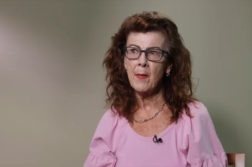CINCINNATI, Ohio (Ivanhoe Newswire) – Every 40 seconds, someone in the United States has a stroke. If a person doesn’t get quick medical attention, it can cause death, or permanent disability. Now, researchers are testing a new screening method that may predict a patient’s motor function recovery. Verify
It’s sometimes called a “brain attack” – an artery in the brain becomes blocked, or a blood vessel bursts, causing bleeding in the brain. Time is brain. The faster doctors can treat it, the better a patient’s chance of recovery.
University of Cincinnati neurologist Pooja Khatri, MD and neuroradiologist Achala Vagal, MD are leading the Verify trial for stroke patients. They’ll use two biomarkers to assess the chance for recovery.
“Our preliminary studies suggests that they’re very good at predicting who will recover their strength, specifically in their arm,” Dr. Khatri says.
Researchers will test with transcranial magnetic stimulation, or TMS.
Dr. Khatri adds, “We’re seeing if the hand moves and we’re actually measuring the impulse of the muscle. So, to see if we’re even seeing tiny muscle movements that tell us that the brain is successfully talking to the hand.”
Researchers will also use MRI to screen a patient’s brain for lesions. The scientists want to determine how much of a pathway between the brain and limbs is blocked.
Dr. Vagal says, “What we are really interested is in understanding where is the stroke or that dead brain tissue.”
The researchers say patients will be recruited while they are still in the hospital – between 48 and 96 hours after strokes. A total of more than 650 patients are being enrolled at 30 hospital sites across the country.
Contributors to this news report include: Cyndy McGrath, Producer; Kirk Manson, Videographer; Roque Correa, Editor.
To receive a free weekly e-mail on medical breakthroughs from Ivanhoe, sign up at: http://www.ivanhoe.com/ftk
Sources:
https://www.nihstrokenet.org/verify/home
MEDICAL BREAKTHROUGHS
RESEARCH SUMMARY
TOPIC: VERIFY: HOPE AFTER STROKE
REPORT: MB #5199
BACKGROUND: Strokes are a serious and life-threatening medical condition that occurs when the blood supply to a part of the brain is interrupted or reduced, leading to damage or death of brain cells. Every 40 seconds in the United States someone has a stroke, and it is the second leading cause of death. Stroke can cause long-term disability, and it is the leading cause of adult disability worldwide. Stroke can affect people of all ages, but the risk increases with age. Men are more likely to have a stroke than women, but women have a higher risk of dying from stroke. There are several risk factors associated with stroke, including high blood pressure, smoking, diabetes, obesity, high cholesterol, and family history of stroke.
(Source:
DIAGNOSING: Diagnosing a stroke is a time-sensitive process that requires a combination of medical history, physical examination, and imaging tests. The symptoms of a stroke can vary depending on the location and severity of the damage, but they typically include sudden onset of weakness or numbness on one side of the body, difficulty speaking or understanding speech, vision changes, and severe headache. Some of the tests performed to detect a stroke include physical examinations, blood tests, CT scan, MRI scans, carotid ultrasounds, cerebral angiograms, and echocardiograms.
(Source:
https://www.mayoclinic.org/diseases-conditions/stroke/diagnosis-treatment/drc-20350119
NEW TECHNOLOGY: Researchers from the University of Cincinnati are set to launch the largest study of stroke recovery ever funded by the National Institutes of Health. The study aims to identify the most effective strategies for its’ recovery and rehabilitation. Neurologist Dr. Pooja Khatri and neuroradiologist Dr. Achala Vagal use two biomarkers to assess patients’ chances for recovery. The researchers test with transcranial magnetic stimulation. They will also use MRI tests to determine if there are lesions on the brain. This will allow experts to see how much of the pathways between the limbs and brain are blocked.
(Source:
https://www.uc.edu/news/articles/2021/11/uc-led-clinical-study-examines-stroke-recovery.html
FOR MORE INFORMATION ON THIS REPORT, PLEASE CONTACT:
Tim Tedeschi
If this story or any other Ivanhoe story has impacted your life or prompted you or someone you know to seek or change treatments, please let us know by contacting Marjorie Bekaert Thomas at mthomas@ivanhoe.com




